All hamsters are cute in their own unique ways, but you’d be hard-pressed to find one that’s more adorable than the long-haired hamster. Characterized by their long hair, these furry little rodents have quickly become beloved pets all around the world.
However, while almost everybody can agree that long-haired hamsters are incredibly cute, many people do not know too much about them. If you’re interested in learning more about these little balls of fur, you’ve come to the right place. Today, we’re going to go over the top 12 facts about long-haired hamsters to teach you everything you need to know about them.
1. Long haired hamsters are Syrian hamsters
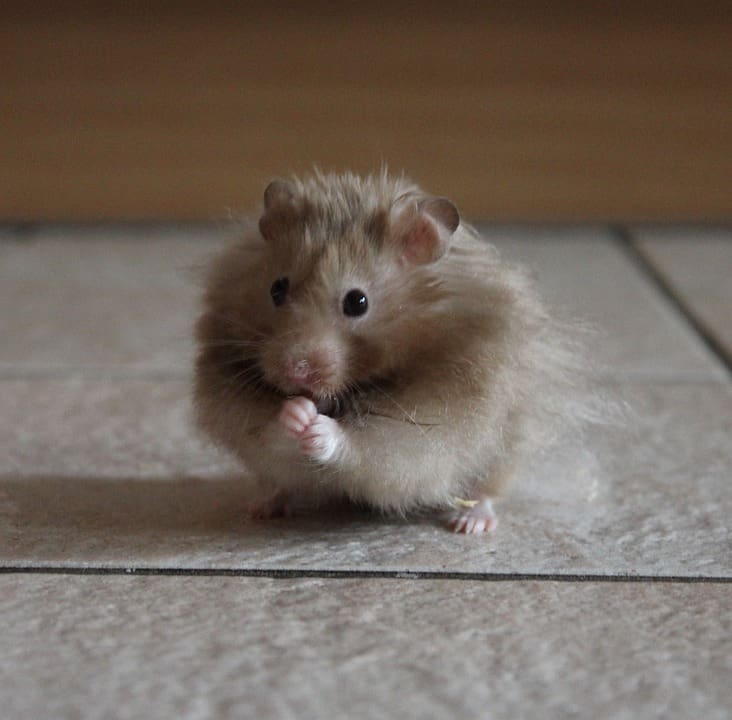
Many people are under the impression that long-haired hamsters are a unique breed but this is not the case, they’re simply a long-haired variant of the Syrian hamster breed. Since they’re simply a variant of this breed, they require the same care.
Syrian hamsters, as their name suggests, are native to the deserts of Syria and Turkey. They’re also known as the Golden Hamster because of their stunning fur which is often golden in color.
They’re the largest pet hamster breed and were first formally discovered in 1797.
2. Their long hair is the result of a genetic mutation
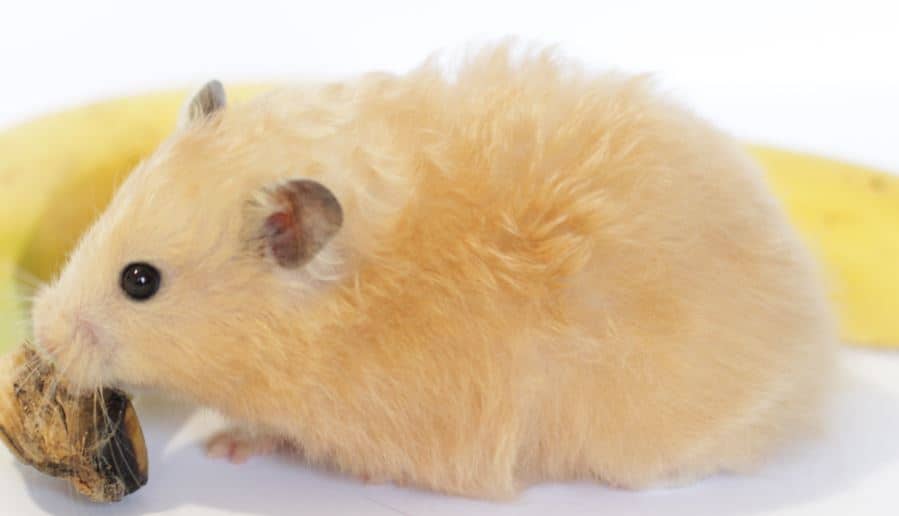
Syrian hamsters have not always had long hair. As far as we know, in the wild, they always had short hair. It’s only recently that there was a genetic mutation that gave rise to long-haired Syrian hamsters.
According to the Journal of Heredity, it is not entirely clear when or how exactly this mutation occurred, but it is speculated that it occurred as a result of the pet trade. In addition, it must have happened before 1973, because that’s when the edition of the journal that first described this new mutation was published.
3. You can’t tell if a hamster pup has long hair at young ages
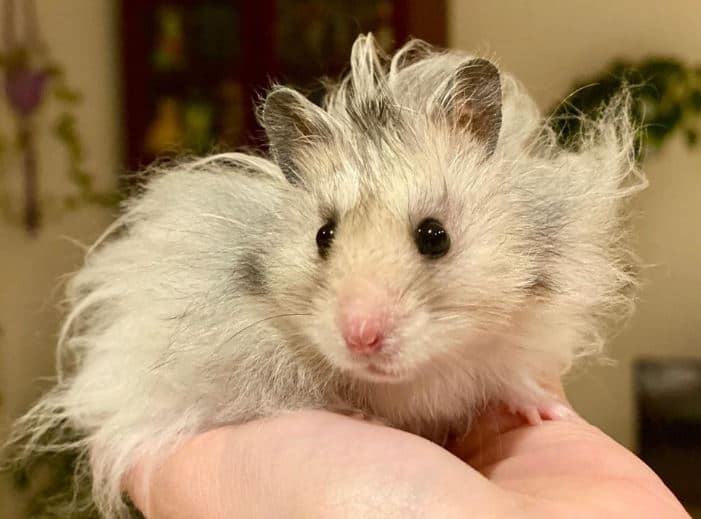
Hamsters are born blind and naked. As a result, it’s impossible to tell the difference between a long-haired baby hamster and a short-haired one.
It’s not until they’re about 24 days old that you can somewhat start to tell the difference between them because the long-haired variant appears slightly fuzzier. At around 28 days, you can really tell the difference because the long-haired hamster then has significantly longer hair than its short-haired cousin.
4. Breeding two of them together guarantees long hair in their pups
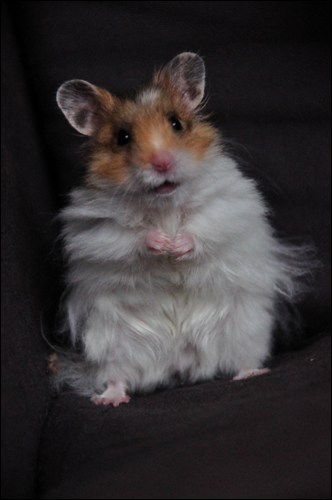
Once scientists discovered that a long-haired variant of the Syrian hamster existed, they did not waste much time before doing some experiments. They primarily wanted to figure out the inheritance of this new coat type. They did this by studying a litter of normal and long-haired Syrian hamster pups.
Scientists discovered that if you breed two hamsters together that both have the gene for long hair that all of their pups will also have long hair. They also discovered that if you breed one long-haired Syrian hamster with one short-haired Syrian hamster, about half of their pups will have long hair.
As a result of these studies, it became clear that breeding the long-haired variant is quite simple. Because of that, they’re not very rare and are relatively easy to find for sale in pet shops or at breeders.
5. They are not very expensive
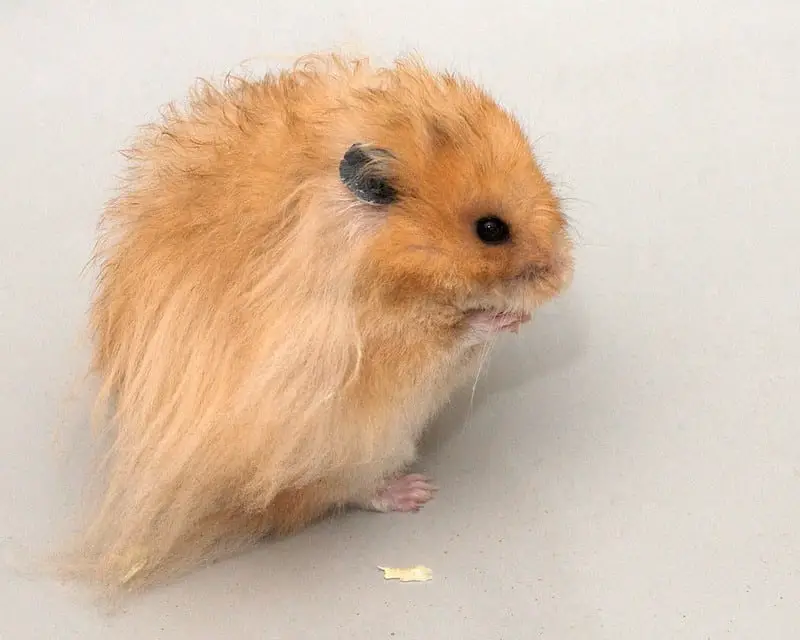
In the past when they were still a novelty, breeders and pet shops used to charge much higher prices for long-haired hamsters than for their short-haired counterparts. The reason for this was that they were quite rare back then.
Because it’s so simple to breed the long-haired variant many breeders jumped on the opportunity to make easy money and started breeding them. As a result, many of them flooded the market and nowadays they do not fetch higher prices anymore and can often be bought for the same price as a short-haired hamster at around $10 to $20.
6. Males look different than females
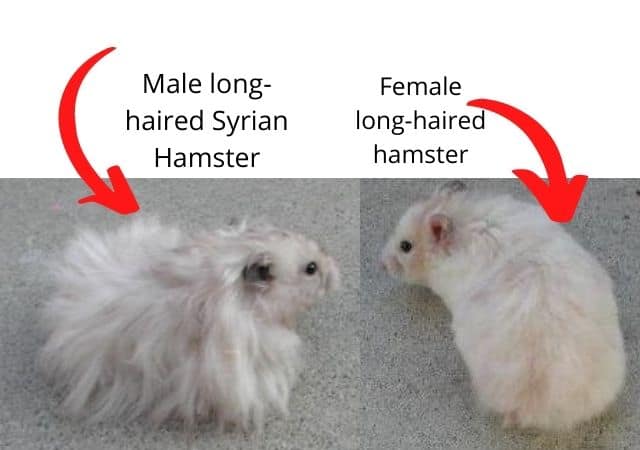
Both male and female Syrian hamsters can have long hair, but it affects them differently. Males typically have a long coat that spans the entire top of their body while the head on their head is generally shorter.
Female long-haired hamsters typically have much shorter hair even though it’s still much longer than that of a short-haired female Syrian hamster. They also often have tufts of longer hair along their rear.
Because of these differences, males often look much fluffier than females.
7. They can have many different colors & patterns
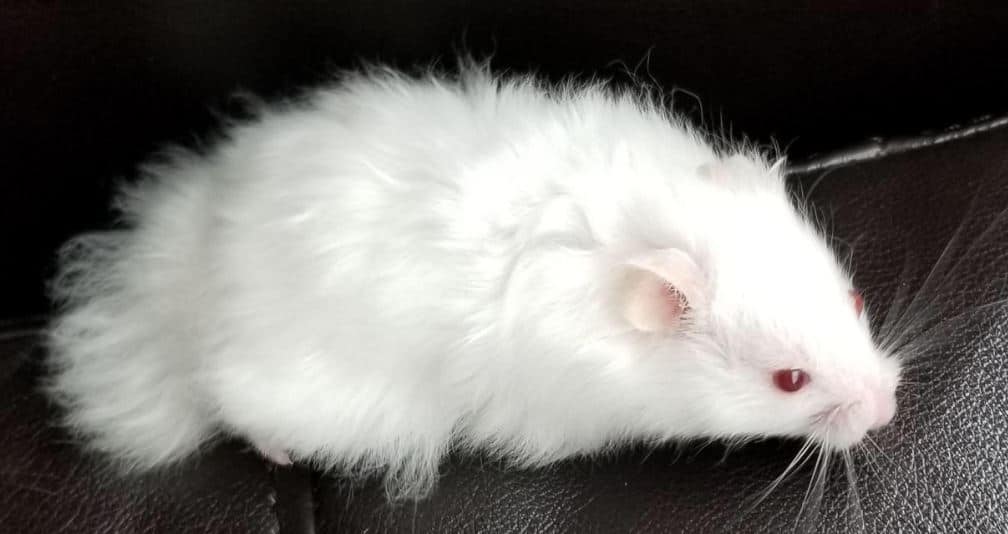
Long-haired hamsters can have many different colors and patterns. They’re most often golden, but they can also have these colors:
- Golden
- Umbrous Golden
- Black-eyed cream
- Red-eyed cream
- Sable
- Black
- Mink
- Cinnamon
- Gray
- Chocolate
- Yellow
- Yellow black
- Albino
In addition, they can have a variety of different patterns such as:
- Panda Bear
- Roan
- Banded
- Tortoiseshell
- Dominant spot
Because they can have such a large variety of different colors and patterns, people who want to have one of these critters as a pet have a lot of different options to choose from.
8. Their long hair can be curly or straight
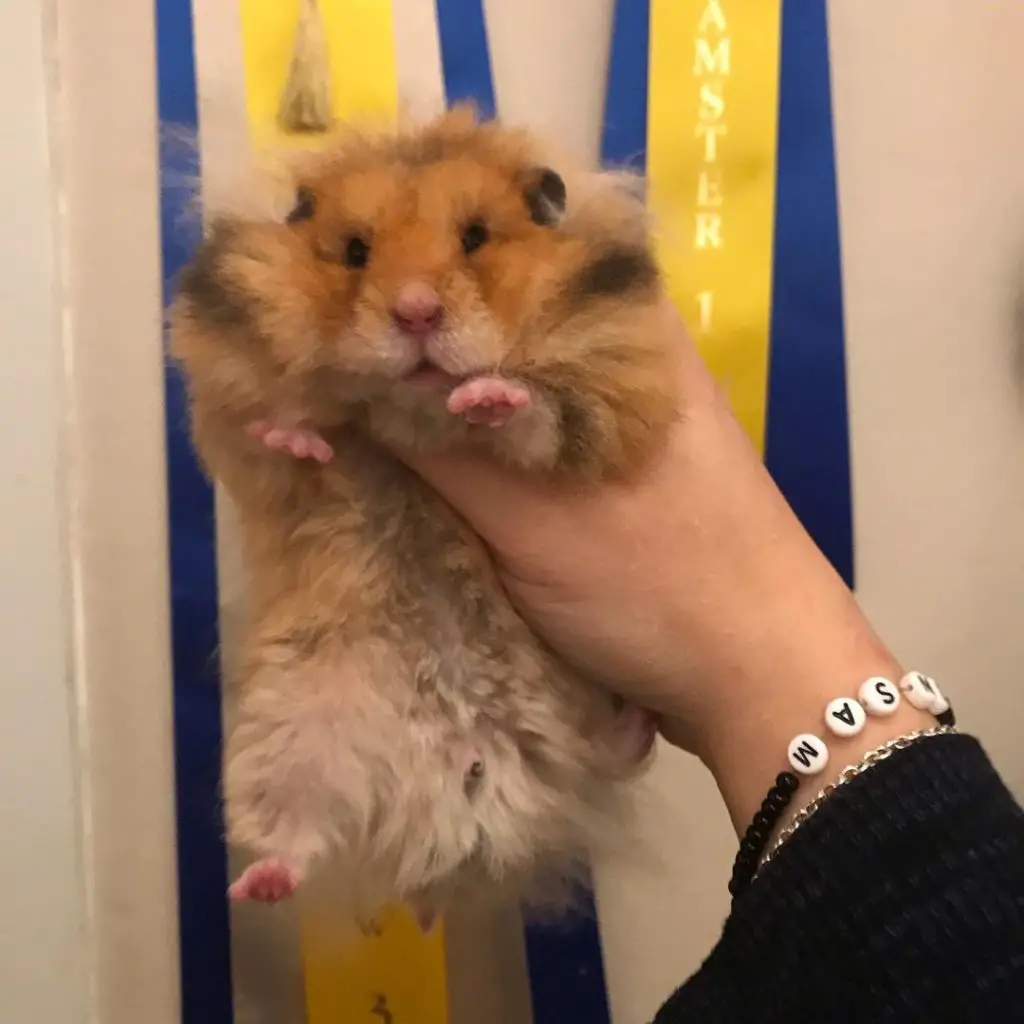
Did you know that the long hair of a hamster can be curly? It’s true! It’s caused by something called the “rex gene”. The Rex gene can occur in long-haired hamsters as well as in short-haired hamsters, making it possible for long-haired, curly hamsters to exist. Long, curly hair creates a very unique combination and makes them highly desired among pet owners.
In addition to curly hair, they also often have curly whiskers.
If they do not have the Rex gene they can instead have the Satin gene which causes smooth, straight hair.
9. They’re often called “Teddy Bear Hamsters”
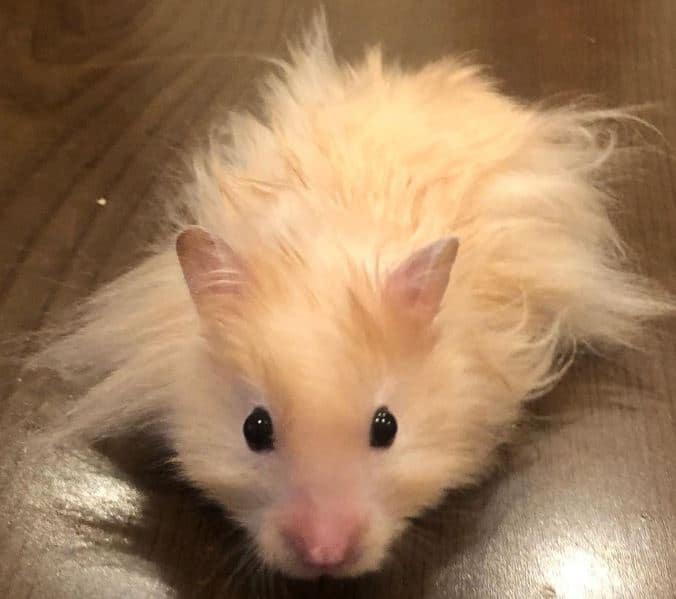
People often refer to the long-haired variant of the Syrian hamster as the Teddy Bear Hamster. This is not an official name for them, but many people call them this because their long hair gives them a cuddly teddy bear appearance.
10. Long haired hamsters are very friendly
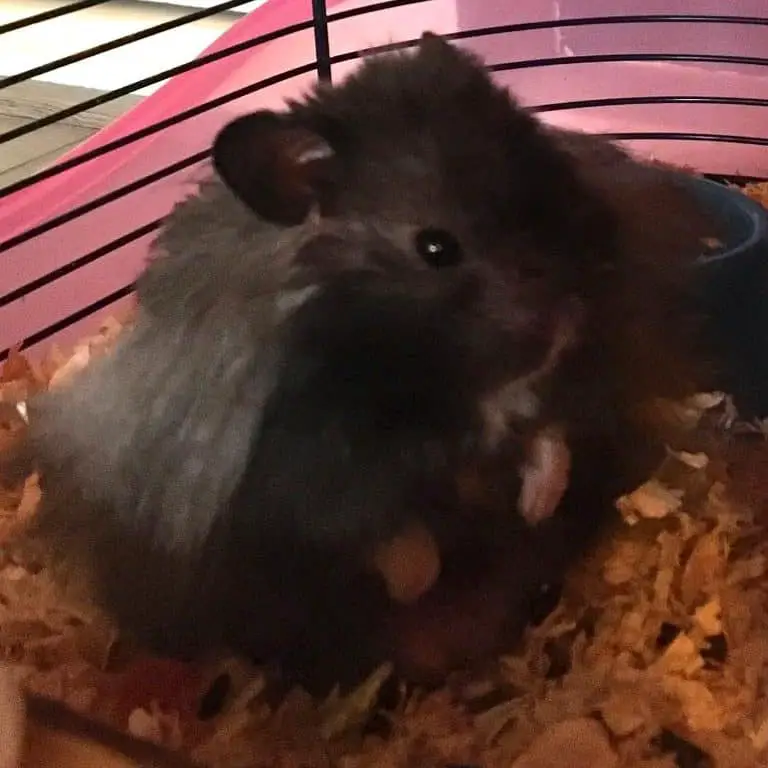
The Syrian hamster, including its long-haired variant, is the most friendly and affectionate of all the pet hamster breeds. They’re easy to tame and generally do not bite as often as dwarf hamsters.
However, while Syrian hamsters are quite friendly towards humans, they’re not very friendly towards other hamsters. These little critters might look cute but they are very ferocious towards other hamsters. In the wild, they live solitary lives. They only meet other hamsters when it’s time to mate. Because of that, they do not respond well to seeing another hamster. If they see another hamster, it often results in a fight to the death, which is why it’s so important to never put them in a cage with another hamster.
11. They have a short lifespan
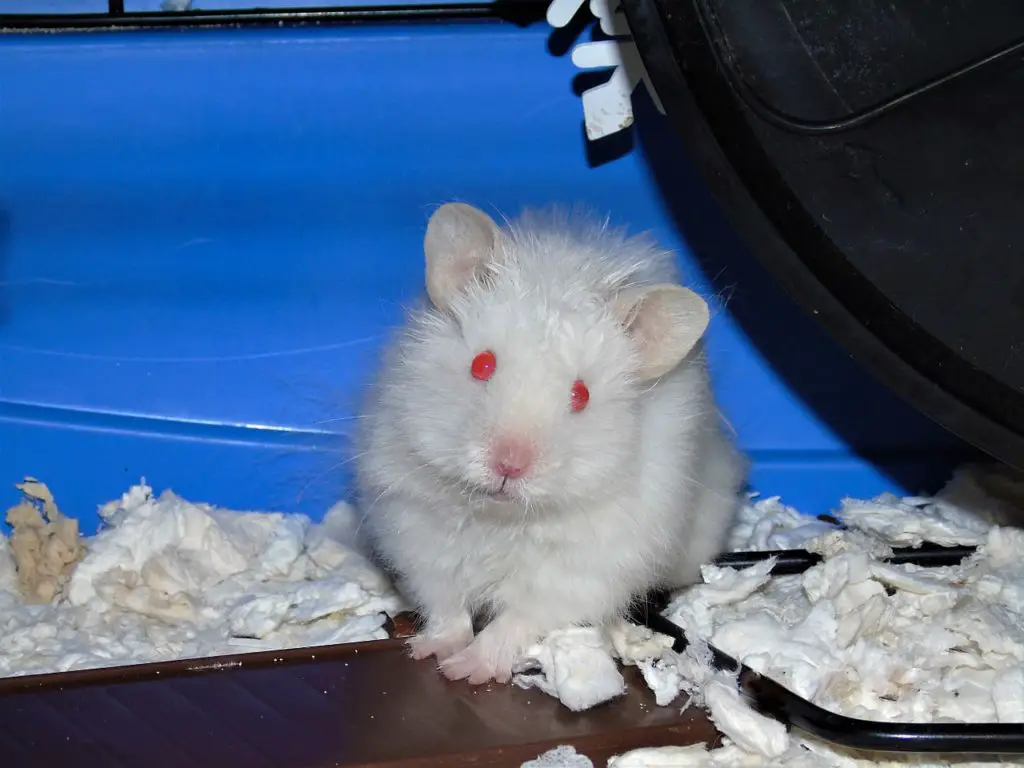
One of the major downsides of hamsters as pets is their short lifespans. Long-haired hamsters have a lifespan of 2 to 3 years. Of course, with good care and good genetics it’s possible for them to live longer, but not all that much longer. The oldest hamster in history was 4.5 years old.
12. Long-haired hamsters are the same size as shorthairs
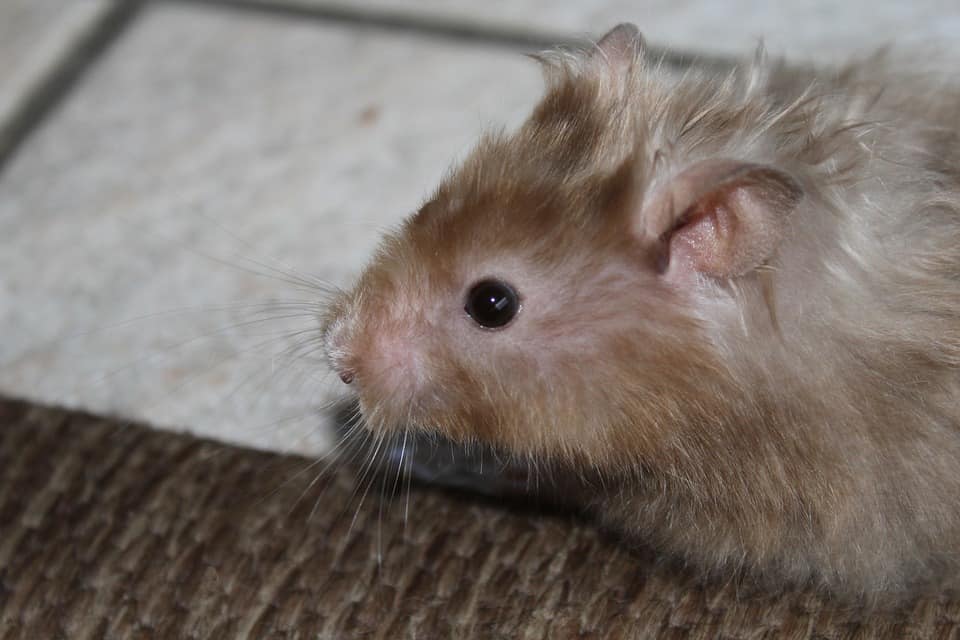
People often think that long-haired hamsters are bigger than their short-haired brothers. This is an easy mistake to make. After all, they do look much bigger. However, this is an illusion, they only look bigger because they have so much more hair! On average, a fully grown long-haired hamster will be about 6 inches in length, the same as any Syrian hamster.
Final words
All hamsters are cute, but if you ask me, the cutest hamster by far is the long-haired Syrian hamster. Not only are they the most affectionate hamster breed, but their long hair also gives them a very unique and adorable appearance.
Unlike what most people think, these hamsters are not a distinct breed. They’re simply a genetic mutation of the Syrian hamster breed, often called “Teddy Bear hamsters”.
These adorable little balls of fur come in a variety of different colors and patterns, so there’s a large array of choices for people who want to adopt one of these critters into their homes.
- How Long Do American Eskimo Dogs Live? Important Factors and Care Tips - September 29, 2023
- Do American Bulldogs Need Grooming? Essential Tips and Care Guidelines - September 29, 2023
- Do Bengal Cats Enjoy Playing? Essential Tips for Keeping Them Active - September 29, 2023